Key takeaways:
- Customer feedback is essential for identifying areas of improvement and enhancing customer relationships.
- Using diverse feedback collection methods, like online surveys and direct interviews, yields richer insights and emotional connections.
- Analyzing feedback by categorizing responses and combining quantitative and qualitative data leads to actionable insights.
- Implementing feedback for improvement fosters trust and encourages further customer engagement and dialogue.

Understanding customer feedback importance
Customer feedback is crucial—it’s the voice of the customer that reveals what’s truly working and what’s not. I remember a time when I received unexpected feedback about a feature I loved. It turned out to be frustrating for users, which made me realize that my perspective didn’t represent everyone. This instance taught me that listening to customers can highlight blind spots in our offerings.
Engaging with feedback often leads to emotional insights that data alone can’t provide. For instance, when a user shared their experience of how our service enhanced their daily routine, it was a powerful reminder of our impact. Have you ever felt that connection when a customer acknowledges your work? It’s motivating and reinforces the importance of fostering that relationship.
Moreover, feedback serves as a guide for improvement. When I analyzed comments from a recent survey, I noticed trends in complaints that pointed directly to areas for enhancement. This moment of clarity revealed how valuable insights can come from even critical feedback, prompting discussions that create meaningful changes. Isn’t it fascinating how every opinion can lead to growth?
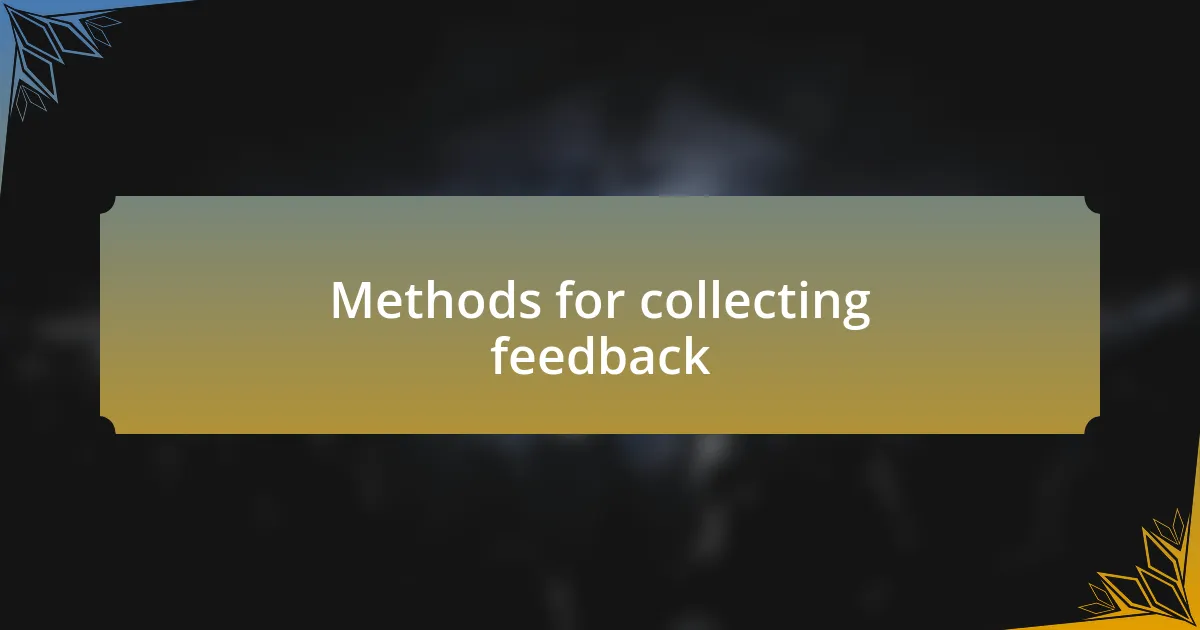
Methods for collecting feedback
Collecting feedback can be achieved through various methods, each offering unique advantages. One approach I’ve found effective is the use of online surveys, particularly after a significant interaction. When I implemented a short survey following a purchase, I was surprised by the response rate. Customers appreciated the opportunity to express their thoughts immediately, and it provided invaluable insights.
Another powerful method is direct interviews or focus groups. I remember organizing a session with a small group of loyal customers to discuss a new feature we were considering. The candid conversations that unfolded were eye-opening. Hearing their stories and concerns firsthand allowed me to grasp the nuances of their experiences, adding a layer of emotion to the quantitative data we often rely on.
Social media is also a treasure trove of unsolicited feedback. I often glance at comments or messages on our platforms. Once, a customer expressed frustration about a shipping delay publicly, but it led to an engaging discussion on how we could improve. This real-time interaction not only resolved an issue but also built a sense of community around our brand. It makes me wonder: how often do we overlook these informal touchpoints that can shape our understanding of customer needs?
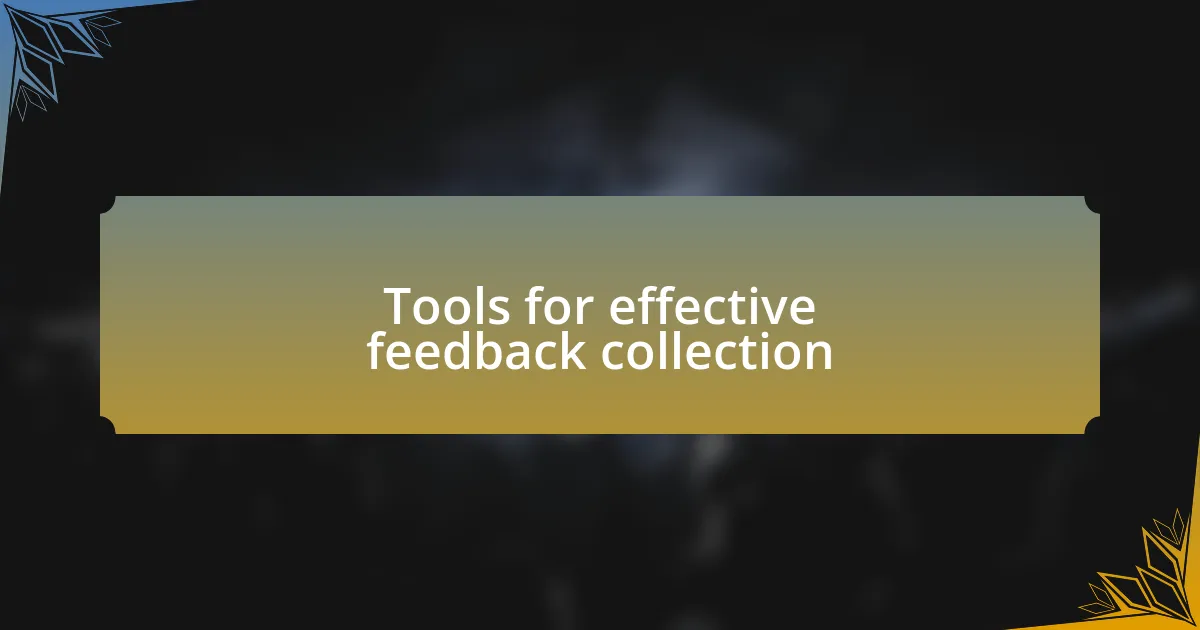
Tools for effective feedback collection
One of my go-to tools for effective feedback collection is specialized feedback platforms like Typeform or SurveyMonkey. I remember using Typeform to launch a feedback campaign after an event, and the interactive design encouraged more detailed responses. The visual appeal and user-friendly interface made it easier for respondents to share their thoughts, leading to richer insights than I’d gotten from traditional forms.
I’ve also found that using customer experience (CX) software like Qualtrics or Medallia really elevates the feedback process. These platforms allow me to analyze trends in real time, which I find invaluable. For instance, during a product launch, I tracked immediate customer reactions and was able to pivot our approach based on their sentiments. Wouldn’t you want the ability to adapt your strategy while the feedback is still fresh?
Lastly, integrating chatbots on our website has changed the game for gathering feedback. I vividly recall a moment when a customer’s comment about our website navigation sparked a conversation through our chatbot. That casual exchange revealed deeper issues that hadn’t surfaced in previous surveys. It’s fascinating how a simple, automated interaction can facilitate such meaningful dialogue; have you considered how these tools might uncover insights that traditional methods miss?
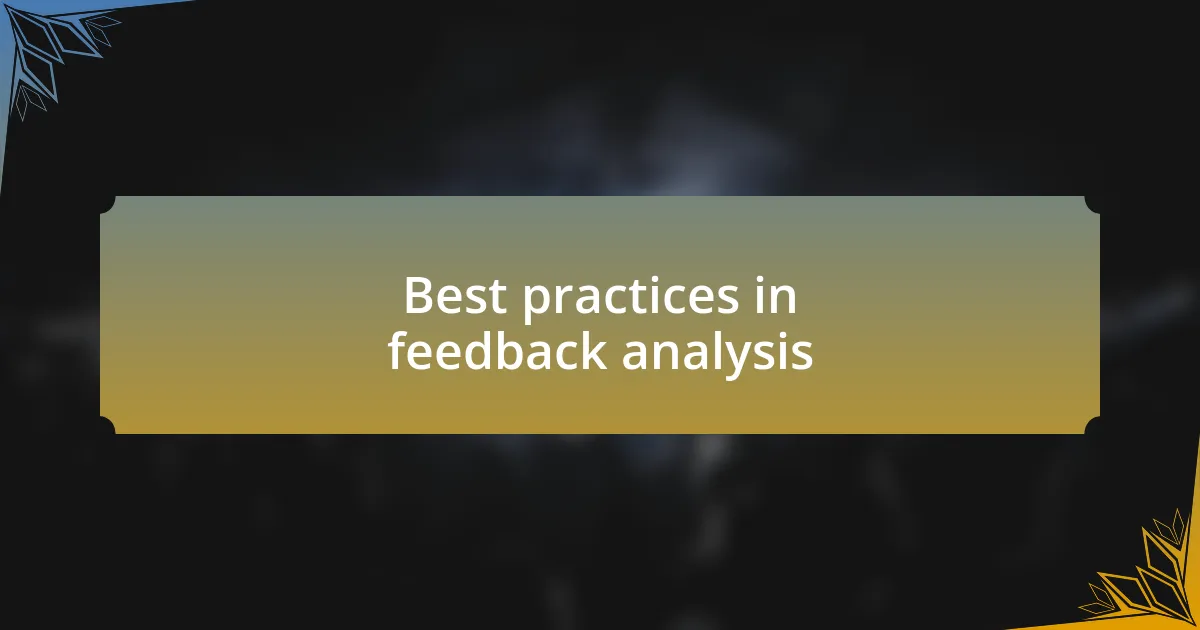
Best practices in feedback analysis
Analyzing feedback effectively starts with categorizing responses into clear themes. I remember one time, after sorting through customer reviews, I identified a recurring concern about our response times. This categorization not only streamlined our analysis but also highlighted areas needing improvement. Have you ever noticed how grouping feedback can reveal patterns you wouldn’t expect?
I also find that employing a combination of quantitative and qualitative analysis ensures a more holistic understanding of customer sentiments. During a recent project, I mixed numerical data from surveys with verbatim comments to glean deeper insights. The numbers told one story, but the comments provided context that truly resonated; isn’t it interesting how a narrative can bring numbers to life?
Lastly, it’s essential to prioritize actionable insights from feedback. I once attended a workshop where we used real customer feedback to create an action plan for improvement. By focusing on tangible steps rather than getting lost in the data, we turned insights into real change. How often do you reflect on how feedback can lead to impactful changes in your organization?
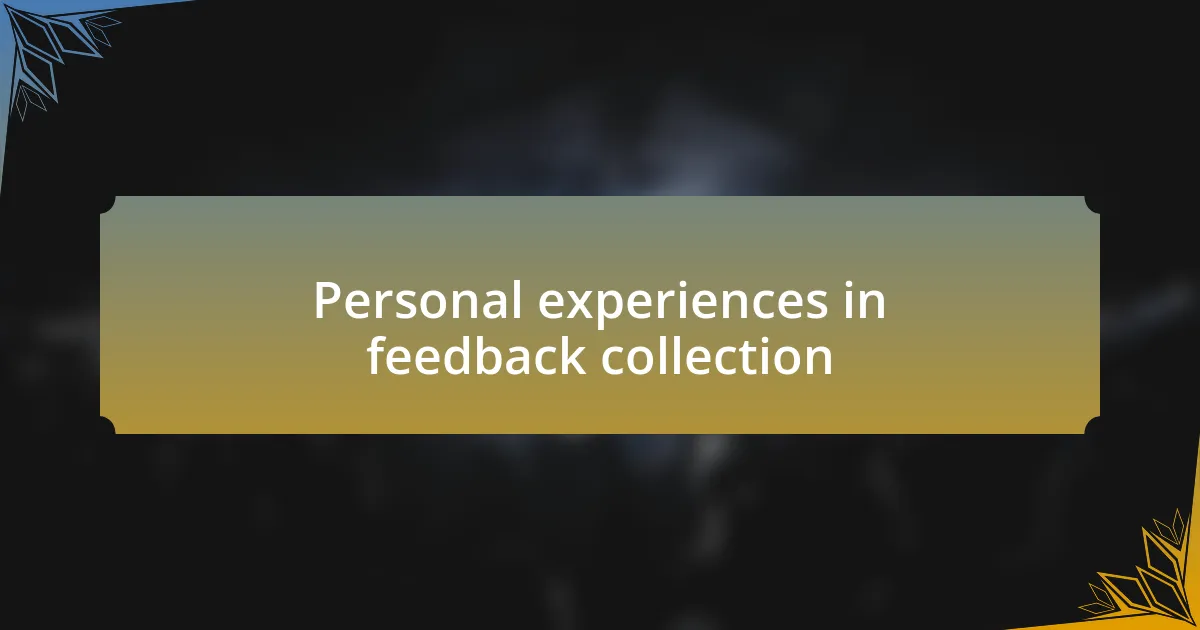
Personal experiences in feedback collection
Collecting feedback can sometimes feel like navigating a maze, but I’ve found that building genuine relationships with customers makes a big difference. For instance, during a focus group I conducted a few years ago, I decided to ask open-ended questions instead of the usual structured format. To my surprise, participants opened up in ways I hadn’t anticipated, sharing experiences that went beyond surface-level feedback. Isn’t it amazing how a little vulnerability can elicit honest insights?
One memorable experience involved utilizing digital feedback tools to reach a wider audience. After launching an updated feature, I set up a feedback popup on our website. The initial influx of responses was overwhelming, but I was thrilled to see users excitedly sharing not just their critiques, but celebrations of the enhancements they’d experienced. Have you ever felt that rush of affirmation when customers genuinely connect with what you’re offering?
Lastly, I’ve learned that the follow-up can be just as important as the feedback collection itself. After gathering insights, I made it a priority to share the results and upcoming changes with our customers. At first, I was nervous that they wouldn’t care, but the positive responses showed me just how valued they felt. Has there ever been a moment where you realized your efforts in communication completely transformed relationships with your audience?
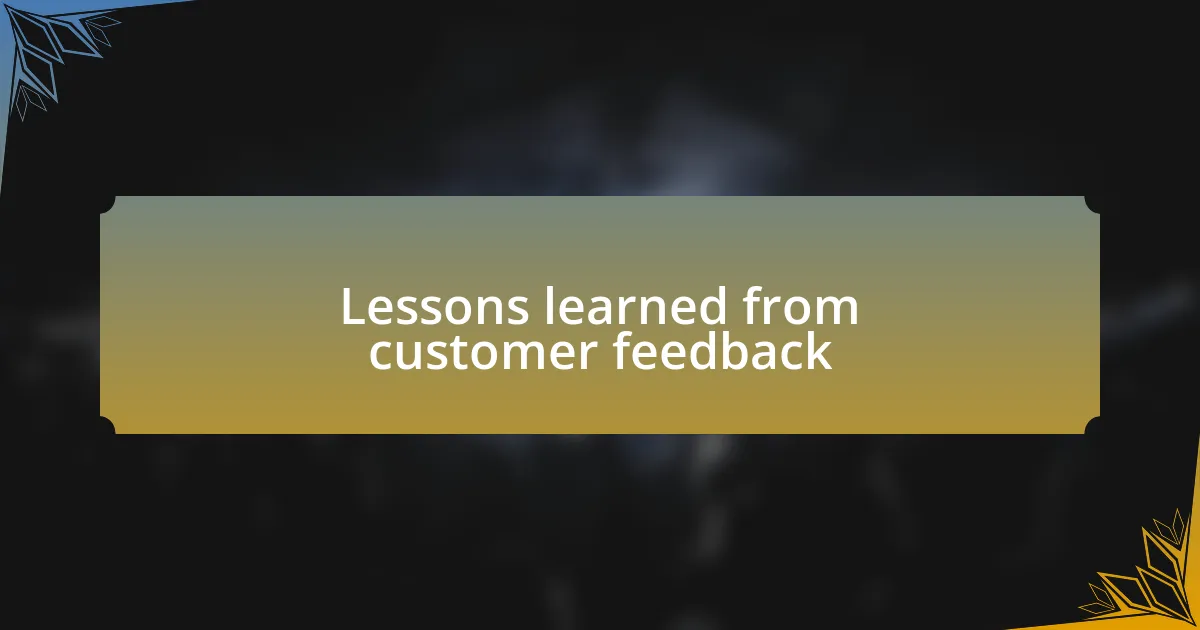
Lessons learned from customer feedback
Lessons learned from customer feedback
One lesson that stands out to me is the power of specificity in feedback. I remember conducting a survey where I asked customers about their experience with a new feature. Initially, the responses were vague, but when I prompted them to describe specific scenarios, the floodgates opened. It was eye-opening to see how detailed insights illuminated aspects I hadn’t even considered. Have you ever noticed how richer details can paint a clearer picture of where improvements are needed?
Another crucial takeaway has been the significance of timing. I launched a post-purchase feedback initiative hoping to gauge customer satisfaction right after delivery. While many shared their positive experiences, it was the few who reported issues that stuck with me. Their immediate pain points guided me to address not just quick fixes but to reassess our overall delivery process. Isn’t it fascinating how timing can influence the quality of feedback?
Ultimately, I’ve grown to appreciate the interconnectedness of feedback and responsiveness. In one instance, after addressing a common concern voiced by several customers, I took to our social media channels to announce the change. The reactions were incredibly positive; customers felt heard and valued. It made me realize that demonstrating responsiveness can turn passive feedback into active engagement. Have you ever experienced that moment when the voice of the customer not only informs your strategy but also solidifies their loyalty?
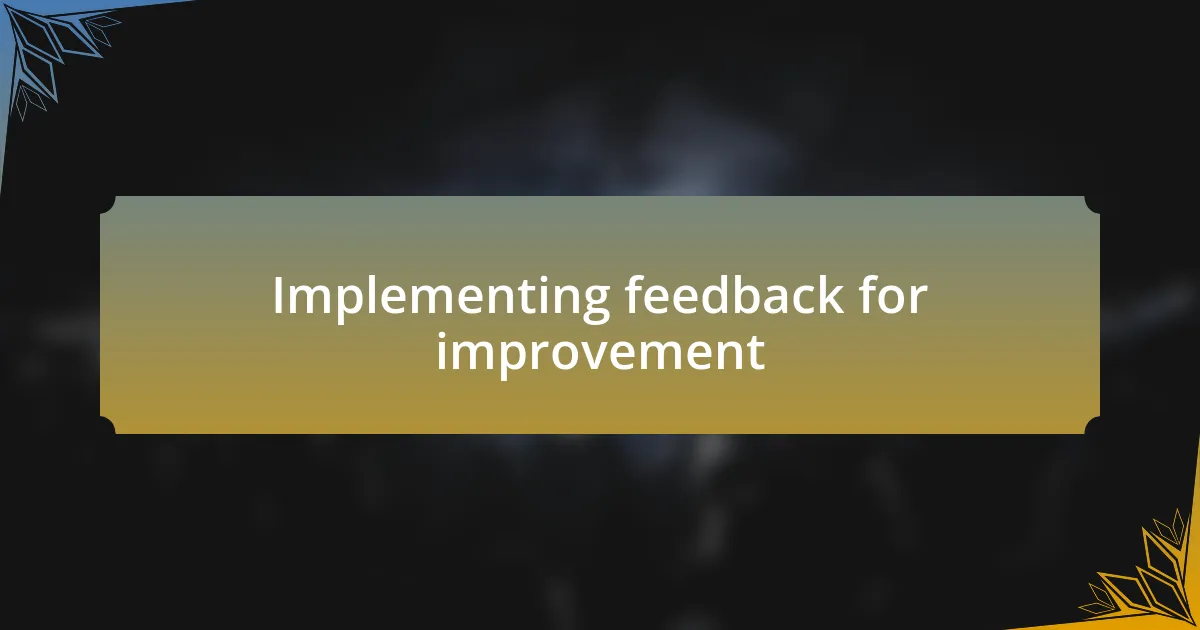
Implementing feedback for improvement
Integrating feedback effectively means more than just collecting responses; it’s about taking actionable steps. I recall a time when a customer highlighted difficulties navigating our website. Instead of merely noting it down, I worked with our web team to streamline the design. When we shared the updates, the positive feedback was overwhelming. Isn’t it rewarding to see direct results from listening and acting?
In another instance, a particularly vocal customer shared their frustration about long wait times. Rather than treating it as a singular complaint, I utilized it as a catalyst for conversation within our team. We brainstormed solutions, eventually implementing a new response protocol that cut wait times significantly. Has anyone else found that a single voice can amplify a problem into a team initiative?
By using feedback as a foundation for improvement, I’ve seen firsthand the transformation of customer relationships. Each time we address their concerns directly, I notice a sense of trust building. It’s as if each resolution strengthens the bond and invites more open dialogue. Have you felt that shift in customer sentiment when they realize their input leads to real change?